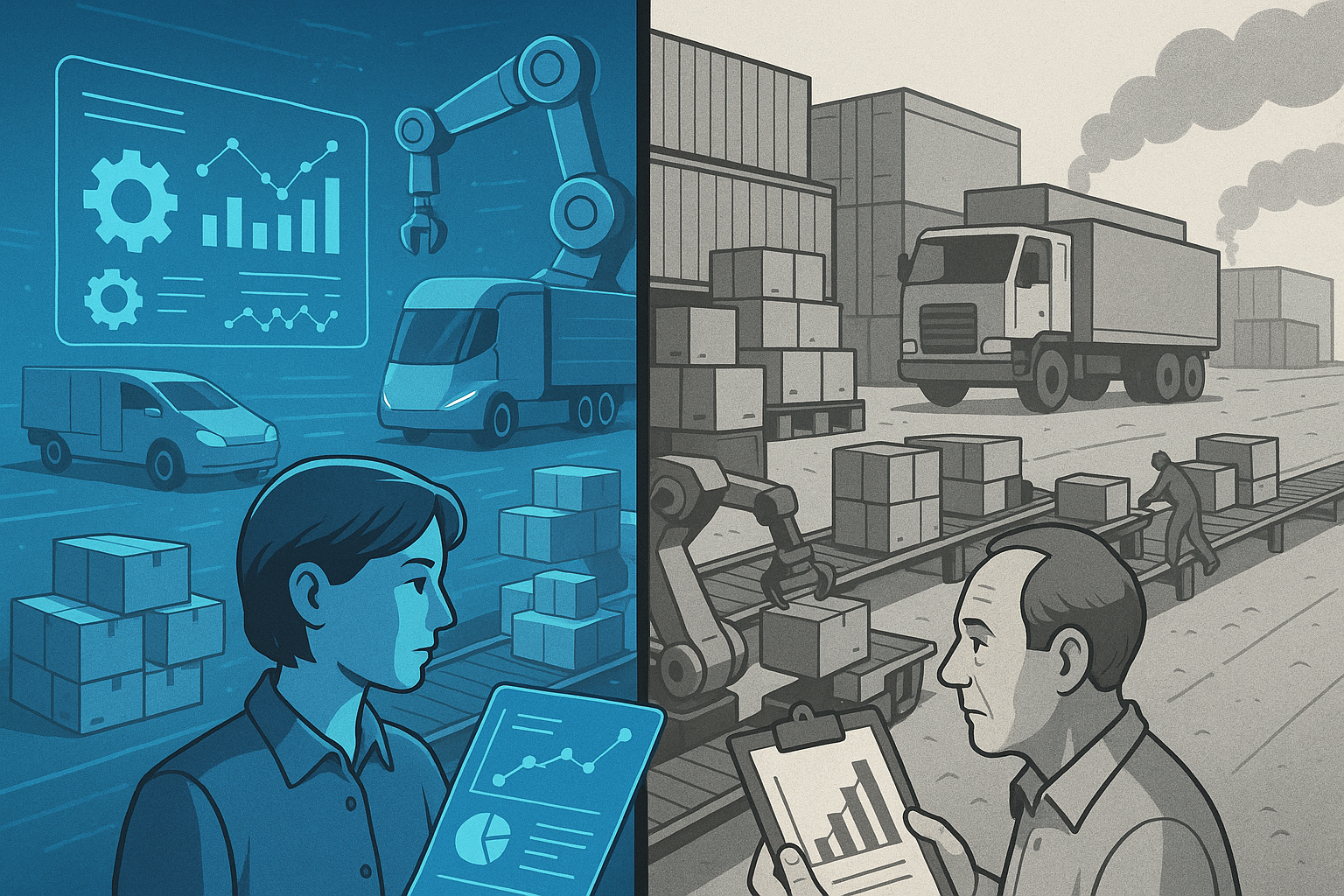
The Growing Divide: The Companies That Are Evolving Their Supply Chains—And Those That Aren’t
A massive gap is forming in the world of supply chain planning. On one side are companies that are actively evolving, investing in new technologies, embracing uncertainty, and architecting resilient, adaptive supply chains. On the other side are those clinging to outdated processes and legacy systems, hoping that incremental change will somehow be enough.
The truth is, the divide is growing. And it’s becoming easier to tell who’s going to win.
Two Paths, Two Outcomes
Supply chains are under siege due to mounting disruptions, geopolitical unrest, inflationary pressures, labor shortages, raw material variability, climate volatility, and shifting customer expectations. But the best-in-class organizations are not just surviving; they’re thriving.
What separates the leaders from the laggards? It’s not just capital or access to data. It’s a fundamentally different mindset and a different approach to planning.

What the Leaders Are Doing Differently
1. Embracing Adaptive Planning Over Static Forecasts
Best-in-class companies know that planning once a month (or quarter) and hoping for the best is no longer viable. They’ve moved beyond deterministic, single-scenario forecasting to embrace adaptive planning powered by probabilistic modeling and AI.
These organizations use the next generation of planning solutions, like ketteQ, to simulate thousands of possible scenarios in seconds, not just to predict the future, but to prepare for it. By understanding the range of outcomes and adjusting proactively, they stay ahead of disruptions and capitalize on upside opportunities.
2. Building Planning Into the Fabric of the Business
Leading companies don’t treat planning as a siloed function confined to supply chain. Instead, they integrate planning with sales, operations, finance, and customer service through platforms like ketteQ on Salesforce. This creates a single, unified source of truth, allowing cross-functional teams to align on demand, capacity, and execution.
When planning becomes part of how the business operates daily, agility becomes embedded in the culture.

3. Prioritizing Speed to Value
In contrast to the long, costly implementations of legacy planning systems, leaders are prioritizing fast, iterative deployments that deliver results in months, not years. They’re leveraging cloud-native platforms like ketteQ with configurable workflows, reusable components, and low-code interfaces to cut setup time and simplify change management.
They don’t wait for perfection; they prioritize speed, learning, and continuous improvement.
4. Empowering Planners with AI, Not Replacing Them
While laggards fear automation will make planning obsolete, leaders see AI as a force multiplier. Tools like agentic AI solvers empower planners to shift from spreadsheet jockeys to strategic problem-solvers.
Instead of spending hours manipulating data, planners focus on evaluating trade-offs, resolving conflicts, and making smart decisions at speed. AI doesn’t replace planners—it makes them indispensable.

5. Turning Data into Action
Top-performing organizations understand that data is only useful if it drives action. They’ve invested in real-time, end-to-end visibility and connected that visibility directly to planning engines that can simulate impacts and generate recommendations instantly.
This closed-loop approach ensures that supply chain insights aren’t just observed—they’re used to drive real, measurable outcomes.
What the Laggards Are Still Doing
Unfortunately, many organizations are stuck in a cycle of the status quo. They:
- Continue relying on manual processes and static spreadsheets
- Are locked into fragmented tools that can’t communicate
- Perform planning in isolated departments with conflicting data
- Struggle with software implementation cycles that stretch 12–36 months
- React to disruptions after they’ve already occurred
- Practice incrementalism, mistaking minor tweaks for true transformation
While the leaders are re-architecting their supply chains for adaptability and speed, the laggards are often caught in an incremental mindset, adjusting one forecast, upgrading one module, or reorganizing one function at a time. However, incrementalism may feel safe while actively eroding competitiveness.
In a world where conditions change overnight, incrementalism, small steps forward, aren’t keeping pace with the size of the challenge. What’s needed isn’t better spreadsheets or slightly faster batch jobs, it’s a fundamental rethink of how planning gets done.
The Gap Will Only Get Wider
The growing divide between planning leaders and laggards isn’t just about technology. It’s about who will be left standing and thriving in the next phase of global supply chain evolution.
Companies that evolve their supply chains are building a lasting advantage: faster response times, higher service levels, lower costs, and better margins. They’re not just future-proofing their businesses; they’re outperforming competitors today.
Those that don’t evolve? They risk falling behind permanently.

Final Thought
The supply chain is no longer just a back-office function. It’s a competitive weapon or a critical vulnerability. And every company must choose:
Will you evolve—or be left behind?
The companies making bold moves today and embracing adaptive planning, agentic AI, and cloud-native architectures are creating a future where planning is fast, responsive, and deeply aligned to business outcomes.
That’s not just evolution. That’s survival.
Read the Definitive Guide to Adaptive Supply Chain Planning to learn how to take your next step in planning evolution.





